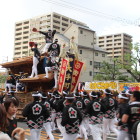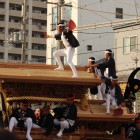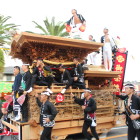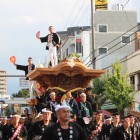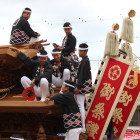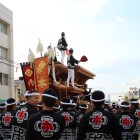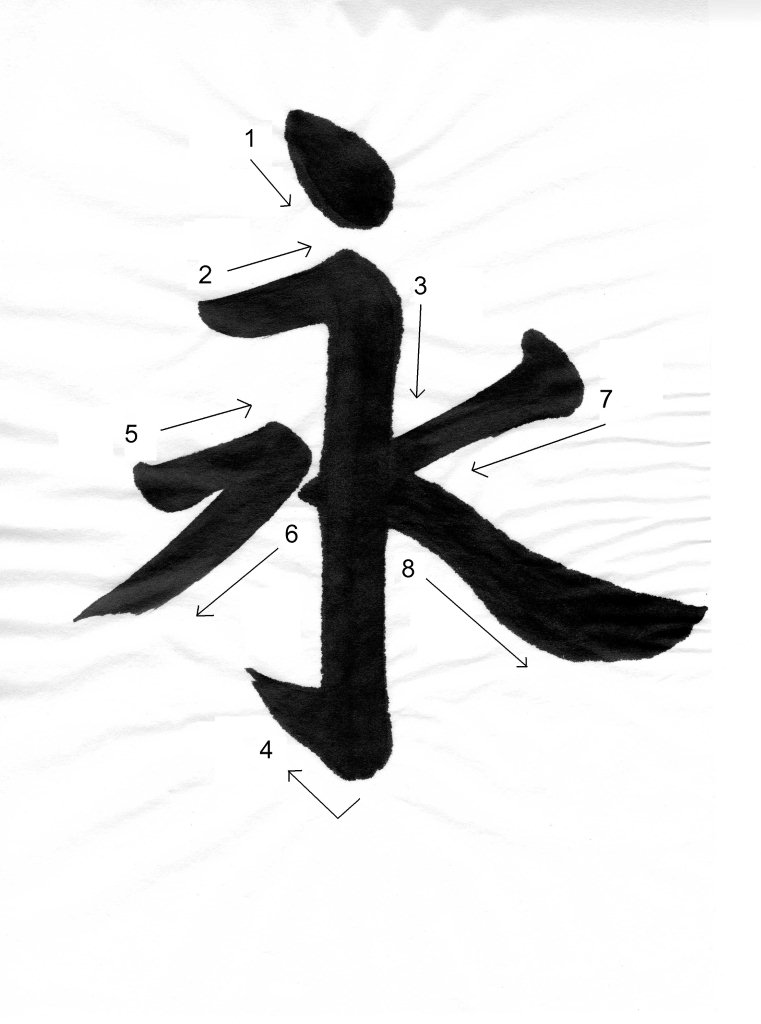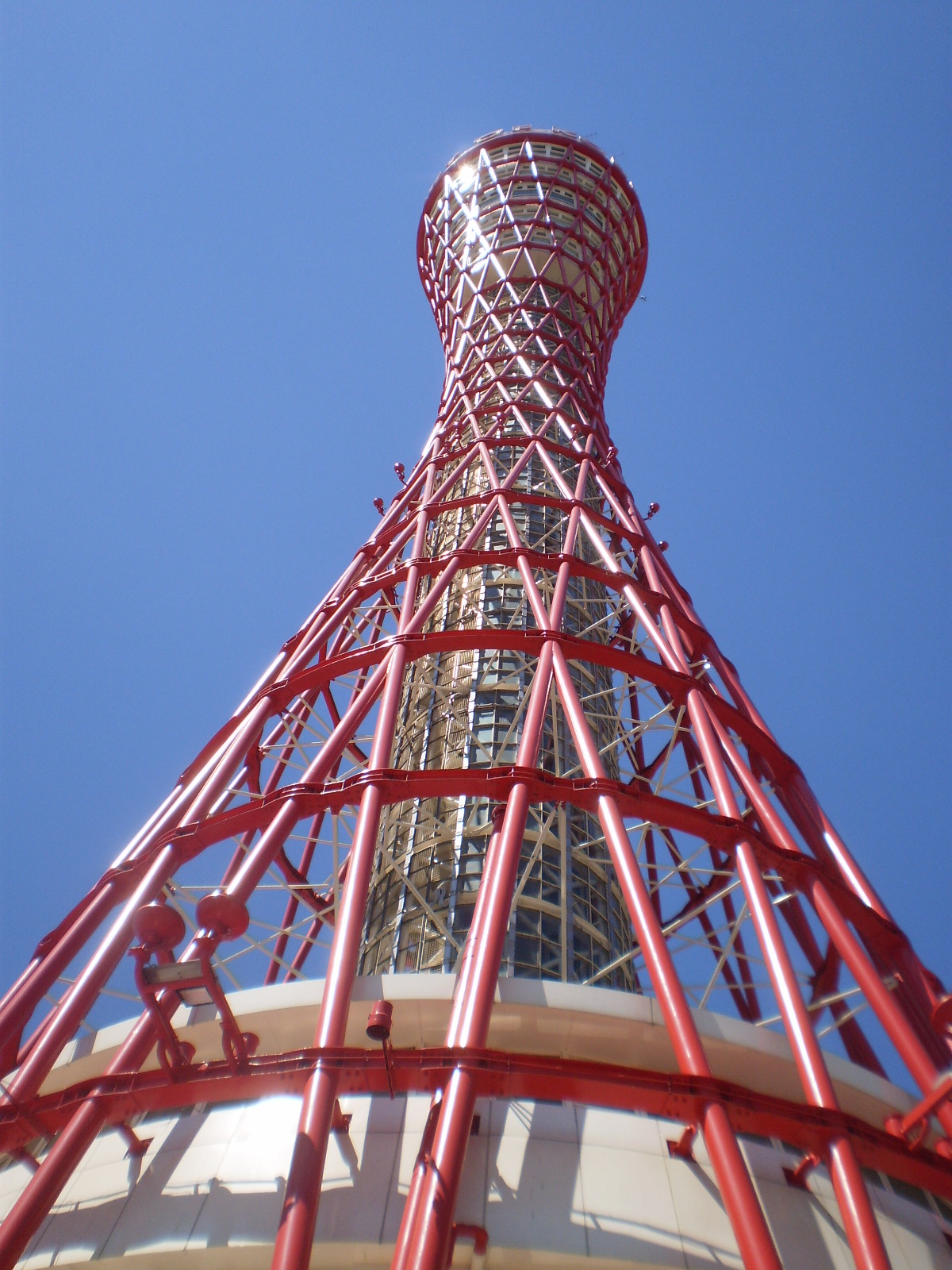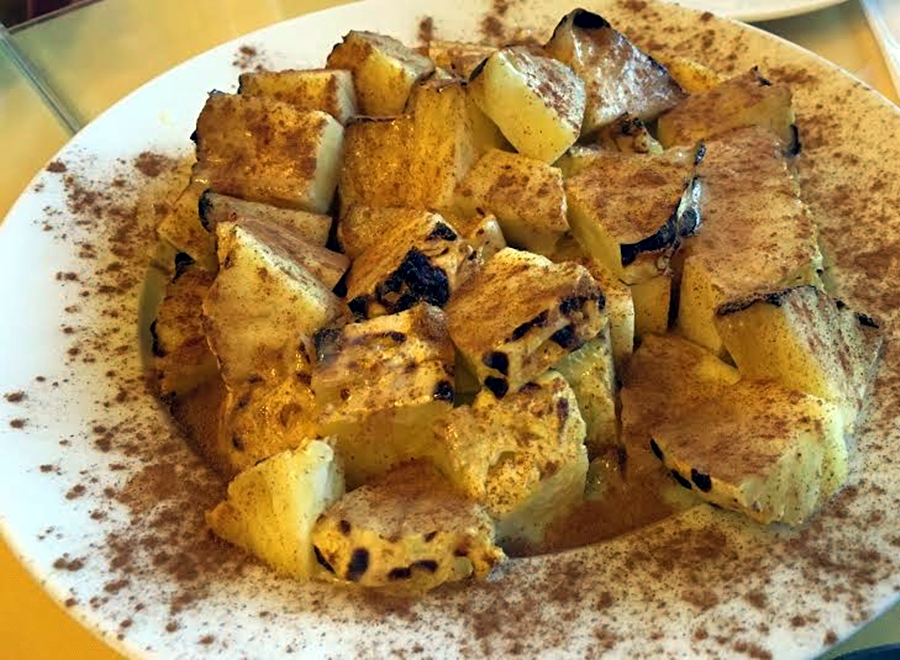Special Feature: Kishiwada Danjiri Matsuri
In the whirlwind that was the first few months of living in Japan, I was lucky enough to have two second year JETs to hold my hand. They showed our ragtag crew around the area and together we went to a Hanshin baseball game, a tour of Kobe, and even to Hikone castle. On one such outing, we were taken to the Kishiwada Danjiri festival in Osaka and, even after the innumerable festivals I’ve been to, it still ranks in my top three festivals in the Kansai area.
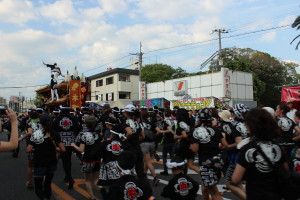  As it was the first festival I went to in Japan, I had no idea what I was in for. We arrived at around four in the afternoon on the second day of the event. It was a balmy sunny day, the intense heat of the afternoon just easing off. Upon exiting the train station, we were halted by the immense crowd gathered along the side of the road. It seemed we had arrived at a popular viewing spot. We waited to see what would appear. Enough sandbags to fuel a civil war lined the side of the streets. We noticed an abnormal number of security personnel patrolling the roads along with a number of parked ambulances. My sempai filled me in on the details of the festival…
 As it was the first festival I went to in Japan, I had no idea what I was in for. We arrived at around four in the afternoon on the second day of the event. It was a balmy sunny day, the intense heat of the afternoon just easing off. Upon exiting the train station, we were halted by the immense crowd gathered along the side of the road. It seemed we had arrived at a popular viewing spot. We waited to see what would appear. Enough sandbags to fuel a civil war lined the side of the streets. We noticed an abnormal number of security personnel patrolling the roads along with a number of parked ambulances. My sempai filled me in on the details of the festival…
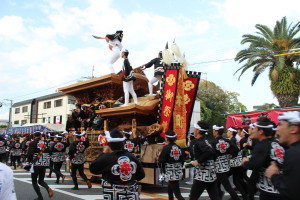 The Kishiwada Danjiri matsuri is the most famous of the Danjiri (cart pulling) festivals. Like the majority of festivals, this ritual started out as a prayer to the Shinto gods for a good harvest. The Kishiwada Danjiri matsuri’s carts are maintained and carried by the various guilds of each region in Osaka. Each guild is attired in matching happi coats and headbands, girls wear their hair in elaborate braids and the carts themselves are carved with gorgeous ornate patterns. For an idea of scale, the wooden carts are too big to fit into a Japanese apartment. Whereas there are some danjiri festivals where the carts are slowly walked to their point of destination, the Kishiwada Danjiri matsuri is known for the exciting speed at which they pull the carts.. In true Osaka style, Kishiwada Danjiri matsuri carts are hauled at top speed; with Daiku-gata (carpenters) hopping and cheering on the carts’ roofs, often resulting in fallen carts and injuries. The abundance of ambulances makes sense. Crashes happen often enough that shop owners can even buy special danjiri insurance for their buildings.
The Kishiwada Danjiri matsuri is the most famous of the Danjiri (cart pulling) festivals. Like the majority of festivals, this ritual started out as a prayer to the Shinto gods for a good harvest. The Kishiwada Danjiri matsuri’s carts are maintained and carried by the various guilds of each region in Osaka. Each guild is attired in matching happi coats and headbands, girls wear their hair in elaborate braids and the carts themselves are carved with gorgeous ornate patterns. For an idea of scale, the wooden carts are too big to fit into a Japanese apartment. Whereas there are some danjiri festivals where the carts are slowly walked to their point of destination, the Kishiwada Danjiri matsuri is known for the exciting speed at which they pull the carts.. In true Osaka style, Kishiwada Danjiri matsuri carts are hauled at top speed; with Daiku-gata (carpenters) hopping and cheering on the carts’ roofs, often resulting in fallen carts and injuries. The abundance of ambulances makes sense. Crashes happen often enough that shop owners can even buy special danjiri insurance for their buildings.
Fully informed, I was now ready for some prime danjiri pulling.
In the next half hour, we saw two carts pass by, but they weren’t traveling at a concerning speed. We decided to move our party to the food stalls and possibly a spot with more action. As is the risk of traveling in a group of visible minorities, we were pulled into the tourist information building by a group of “helpful†middle aged women. It soon became apparent that they wanted a photograph of foreign people in happi coats. We were more interested in nourishing our stomachs, but their insistence was overwhelming. The whole ordeal took about twenty minutes; I don’t think we would have been able to escape without first being photographed. We were finally sent away with a number of pamphlets, maps, and complimentary rope head bands to make room for the next group of tourists.
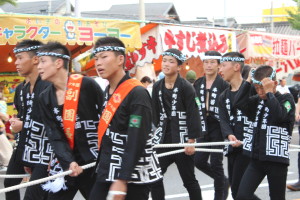 We then found an intersection where a large number of carts were passing through. The excitement built up in a linear relation to the swelling crowds. Drums were beaten, unique guild cheers chanted, and accompanying pipe players let out a cheerful melody. None of the carts tipped over, but the lithe acrobatics of the Daiku-gata on the carts were suitably awe inspiring.
We then found an intersection where a large number of carts were passing through. The excitement built up in a linear relation to the swelling crowds. Drums were beaten, unique guild cheers chanted, and accompanying pipe players let out a cheerful melody. None of the carts tipped over, but the lithe acrobatics of the Daiku-gata on the carts were suitably awe inspiring.
With the party in full swing and the evening festivities just beginning, behind us a cloud of impending doom slowly approached. The sky started to fall, and so ended the adventure of my first festival in Japan. My Kishiwada Danjiri matsuri was short and sweet, but unforgettable.
Split over two weekends, the festival takes place each year on the Saturday and Sunday before the Respect for the Aged national holiday. This year the first, and more famous weekend, will be the 14th and 15th of September, followed by part two on the 12th and 13th of October. If the festival is rained off, like last year, it is often rescheduled for the following day.
Paige Ngo
Danjiri Terms (paraphrased from http://www.city.kishiwada.osaka.jp/site/danjiri/)
Hiki-dashi (Opening pull)
  The opening pull of the Danjiri Matsuri is done with high spirits and speed. A 6am siren signals all thirty-five Danjiri teams to tug their carts in a mad dash through the streets of Kishiwada.
Yari-mawashi (Corner turning)
  Working both front and rear levers in unison, Danjiri teams literally “skid†their heavy carts around each street corner. Accompanied by the beat of drums and shouts, turning corners is one of the most dramatic elements of the festival.
Daiku-gata (Carpenters)
  The privilege and risk of being on the roof of the carts belong to Kishiwada’s local carpenters. As the most visible member of the Danjiri team, each daiku-gata creates his own style of dance. “Hikoki-nori†(the Airplane dance), performed by spreading your arms wide and standing on one foot, is particularly famous.
Horimono (Wood carvings)
  Each of the massive carts is adorned with a number of intricate wood carvings. The carvings depict celebrated battles and records of war in ancient Japan.
Hi-iri Ei-kou (Parade of lantern-lit Danjiris)
  In the evenings, brilliant red lanterns are affixed to each cart, and the carts are slowly marched along the main parade route. The bright lanterns and costumes and the rhythmic drums and chants blend with the sounds and smells of night vendors to produce a wonderfully different experience: an evening matsuri.
Weekend 1: Saturday September 14th (6 am – 10 pm) and Sunday 15th (9 am – 10 pm)
(testing Sept 8th and 13th 2 pm – 4 pm)
Weekend 2: Saturday October 12th (6 am – 10 pm) and Sunday 13th (7 am – 10 pm)

